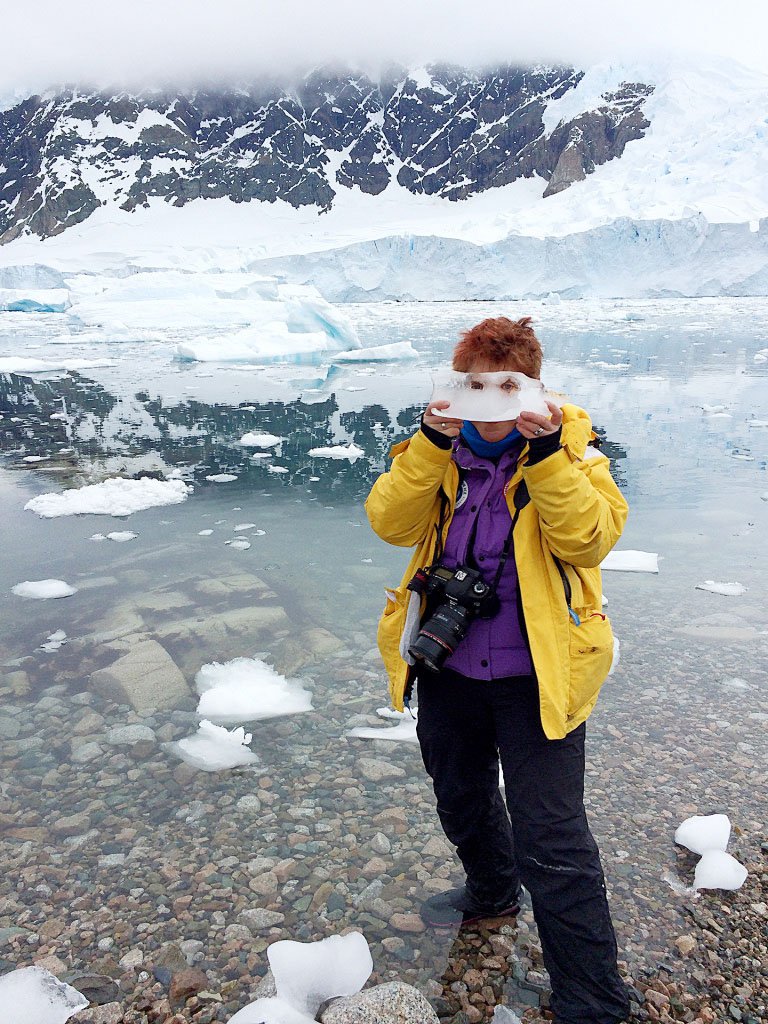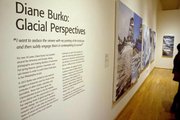Artist Diane Burko's work, focused on the effects on climate change on glaciers, blends her hopeful spirit with subtle scientific messages about these remote regions of the world. Her exhibition "Glacial Shifts, Changing Perspectives" is open at the Joy Pratt Markham Gallery inside the Walton Arts Center for the Artosphere festival and will be on display through September. Burko answered these questions for What's Up! just before the opening of her exhibition.
Q. How did you come to be documenting glaciers and ice fields?
FAQ
“Glacial Shifts, Changing Perspectives: Bearing Witness to Climate Change”
WHEN — Through September
WHERE — Walton Arts Center in Fayetteville
COST — Free
INFO — 443-5600, waltonartscenter.org
A. I think I could say I've spent my whole career focusing on the landscape and the environment -- big, big images of big spaces. It occurred to me in 2006 that there was another issue aside from my just painting beautiful paintings. There also was this issue of maybe nature being threatened. Al Gore had just launched his "An Inconvenient Truth" movie, and Elizabeth Kolbert had just written a really important book called "Field Notes from a Catastrophe." So climate change was kind of in the zeitgeist, it was in the air. That was sort of my lightbulb moment. I started looking at repeat photography, which is a concept that geologists use to visually study the change in glaciers. So that was the beginning of my exploring glaciers and how they have been for the most part diminishing, receding. And not moving in the other direction.
Q. What was it aesthetically about these large landscapes that drew your artistic eye?
A. I'm not a super-realist painter so my paintings don't look like photographs -- although they're taken sometimes from photographs -- and a large vista is more abstract and I love abstract painting. I don't see a difference between a painting of a landscape and an abstract painting. so these large vistas allowed me to move the paint around, to work with large areas of color and different contrasts and different markings. So it was a way to aesthetically explore the painting medium while still kind of linking it to a recognizable image of the landscape.
Q. There's of course a lot of science and opinions out there on climate change. What do you think art adds to that conversation?
A. I think if art is based on science, it can add another kind of voice to the conversation, another way for someone to enter into the study of the environment, and maybe understand it on a different level. I think it's hard for people to read graphs or scientific papers, and I think it's misleading to only believe whatever their political party says on either side of the aisle. I don't think climate change is a political issue. It's not a belief system. It's a fact. And it is a fact that 97 percent of all climate scientists know and acknowledge this is a man-made problem. So I think if people enter into the exhibition and spend a little time [with it], they might come away with new knowledge, and that knowledge would contribute hopefully to our saving our planet. And that's a good thing.
Q. These landscapes are places not many people get to see firsthand. What is it like to be out there?
A. It's very magical, and I do feel privileged to have been to the three largest ice fields in the world -- that would be Antarctica, Greenland and also the Patagonian ice field of Argentina. It feels very magical, and I think the fact that I've been lucky enough to do this and I've worked hard to get to these places, I do feel an obligation to share the beauty and the magic of these places with the public and I feel an obligation to talk about them like I'm talking to you. I'm not an artist who just sits in my studio; I believe in public engagement where I can share the information I've learned, the facts I've learned and the experiences I've had, not just visually but also verbally by speaking with people.
Q. What do you hope people feel about the landscapes or the climate change aspect of it when they look at these images?
A. I hope they get a deeper understanding. I hope they see the enormity of it, especially because a lot of my images are sort of macro and micro; a lot of the images are about looking from a satellite so they can engage with that on an abstract level but then they can understand what they are. Some of the images are based on facts that have happened: Like the fact that the icebergs that are still flowing from the fastest [melting] glacier in the Northern Hemisphere (in Jakobshavn, Greenland) -- well, one of those icebergs sank the Titanic! So it's a way of connecting to history and connecting on an emotional level. Art can bring you in and engage you on a more emotional level than just facts, and I think that's an important factor in human behavior and human comprehension.
-- Jocelyn Murphy
NAN What's Up on 05/12/2017


